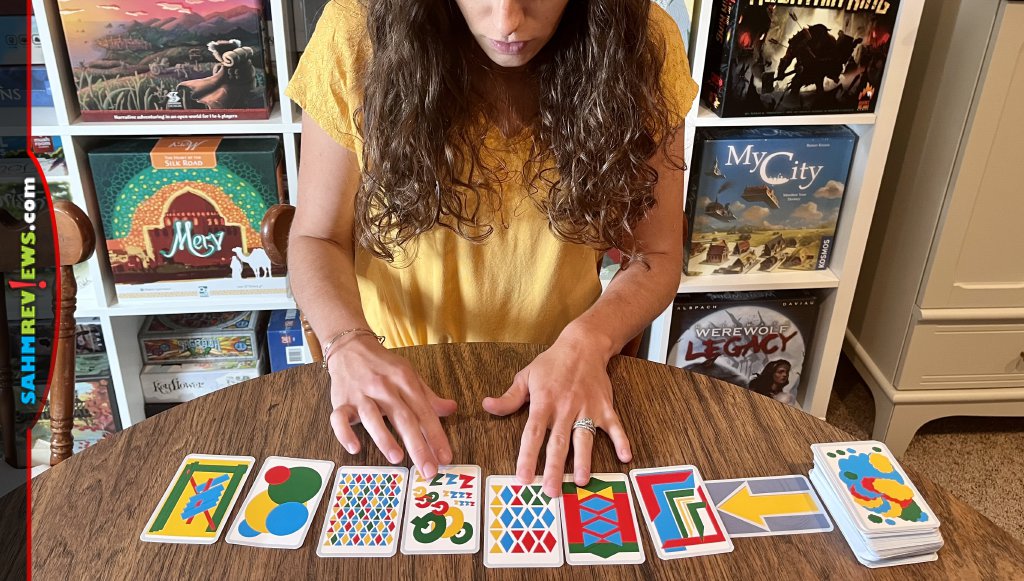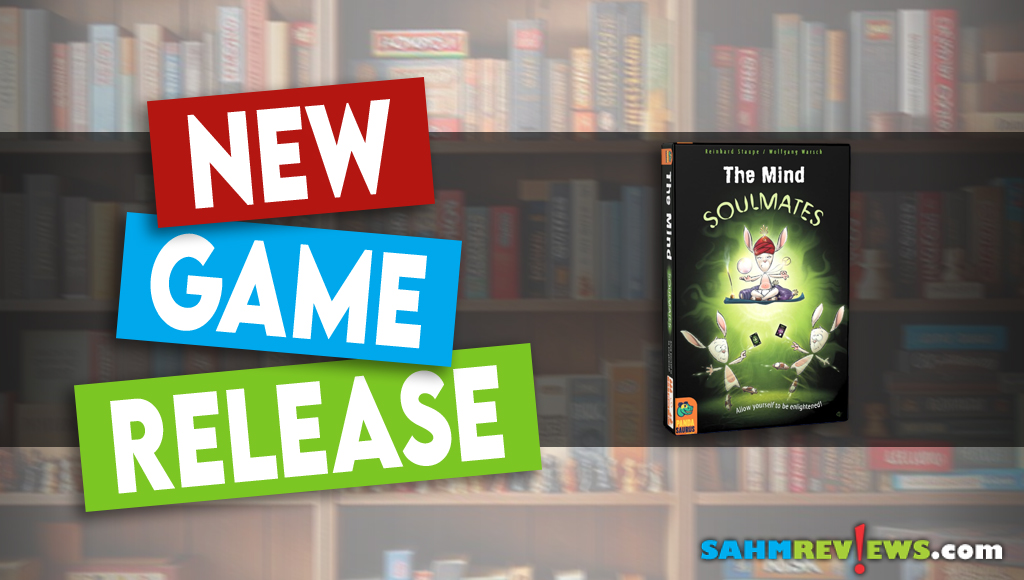Illusion Color Perception Game Overview

This year we haven’t been able to attend many of the big board game conventions. After thinking about it, Great Plains Game Festival where we got to see Nicole and Scott, was the last board game convention we attended. We play most of our games at home with the kids or between the two of us, but conventions have additional benefits. They provide an opportunity to see new games, learn from others, and most importantly play a ton.
Fortunately for us, we were sent a new copy of Illusion, a color perception card game where you need to call other player’s bluff at the right moment. The game was initially published by Nürnberger-Spielkarten-Verlag, but Pandasaurus Games brought it to the USA for us to enjoy.
Have you ever seen those picture puzzles that ask you which line is longer? Or, if a certain color is the same or different when it is next to other colors. These brain burners are fun while challenging you to learn that things aren’t always how they appear. This concept of bending your brain is what I think of when playing illusion.

Setup is super fast and quick, as there are only two types of cards that make two different decks. One deck is composed of the arrow cards which indicates the color of focus. The other deck is made up of cards with different designs, each including some percentage of the colors red, blue, green and yellow.

As the game progresses, a row of color cards will be forming. Based on the color on the arrow, each card should get progressively higher in its percentage of overall appearance. Players take turns in a clockwise order and have two options: Add to the existing row or challenge it.

To continue the row, flip over a new color card and place it in order of how much proportion of the shown color on the arrow card is on that color card. If you think the current order is correct, this is the action you take. After revealing a new card, decide where it lands in the current order of cards in the row.
If you think someone has made an error, challenge the validity of the current order of color cards present. Essentially, if you think the order of cards is not in ascending order of how much of the active color is on those cards, you can perform a challenge. This isn’t just the newly added card, but any card in the entire row.

When challenging, all cards in the row are flipped over. The card backs reveal the percentage of each color on that card. Looking only at the percentages corresponding to the color on the current arrow, determine if they are lined up properly. If the order is not in ascending order, then you win the challenge and claim the current arrow card which counts as a point. If you challenge and the order of the entire row is correct, then the player who last put down a color card is awarded the arrow card.

As I previously mentioned, you will discover some cool patterns using colors in different proportions. You will need to use your brain to decide if the area on your new card of the active color has more area on it than the other cards. You might have to place your new card in the middle of the row somewhere or on the ends. The beginning of the round is easier because you only need to compare it to 1 or 2 cards, but as the round progresses, you will need to decide what the chance are that the orientation of the cards is correct or not, and if you think it is correct, you will need to then choose where your new card should go.
The concept is really neat, and I haven’t seen it used in many games. This game works great with kids as well, and helps them stretch their brains. Things are always as they appear, at least that’s what I tell me kids when playing this game. Em and Ev both do well and will many times believe the older players when placing cards. The reality is that even older players will mess up the order, and when you get enough cards out there, there is a high chance that the row isn’t in the correct order. Copies are available online from Pandasaurus Games, on Amazon, or locally at your game stores. This is a gem of a game, and would be perfect for so many situations.
Are you usually successful with these types of brain teasers?


